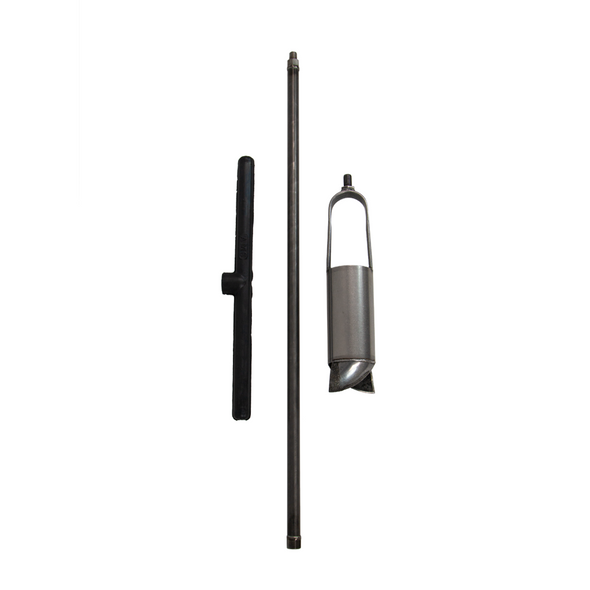Description
The Field Vane Shear Tester Kit is used to measure in-situ undrained shear strength in clays. It is primarily intended for use in trenches and excavations at depths up to 3 m. This can be extended with additional optional extensions. The range of the instrument is from 0 to 260 kPa when three different size vanes are used. Accuracy should be within 10% of the reading.
The measuring part of the instrument is a spiral-spring, (max. torque transmitted 30 kgcm). When the handle is turned, the spring deforms and the upper part and the lower part of the instrument gets a mutual angular displacement. The size of this displacement depends on the torque required to tum the vane. By means of a graduated scale shear strength of the clay is obtained.
The lower and upper halves of the instrument are connected by means of threads. The scale is also supplied with threads, and follows the upper part of the instrument by means of two lugs. The O-point is indicated by a line on the upper part. When torque is applied, the scale-ring follows the upper part of the instrument, and when failure in the clay is obtained, the scale-ring will remain in its position due to the friction in the threads.
Four sizes of four-bladed vanes are supplied:
- 20 x 40 mm (standard): Reading is direct-Range is 0 to 130 kPa (1.3 TSF)
- 16 x 32 mm (extra vane): Multiply reading by 2-Range is 0 to 260 kPa (2.6 TSF)
- 25.4 x 50.8 (extra vane): Multiply reading by 0.5-Range is 0 to 65 kPa (0.65 TSF)
- 50.8 x 101.6 mm (extra vane): Multiply reading by 0.0625-Range is 0 to 8.125 kPa (0.08 TSF).
Each mark on graduated scale equals 1 kPa. Therefore, the mark 1 actually represents 10 kPa when using the standard (20 x 40 mm) vane. The maximum possible reading is 130 kPa using the standard vane and 260 kPa when using the smallest (16 x 32 mm) vane.
The “area ratio” of the vanes are 14, 16.5 and 24% (ratio of cross sectional area of vane to the area to be sheared).
The vane blades are soldered to a vane-shaft, which can be extended by one or more 0.5 m long rods. The connection between the shaft-rods and the instrument is made by threads. To make the connection as straight as possible, the rods have to be screwed tight together and with threads free from dirt. The maximum shear strength that can be measured with the inspection vane is 260 kPa. In clays with this shear strength, a force of about 40 to 50 kilos is required to press the vane down into the clay. The vane-shaft is designed to take this -force, but if extension rods are used, precautions against buckling are suggested.
Kit weighs 16lbs!









